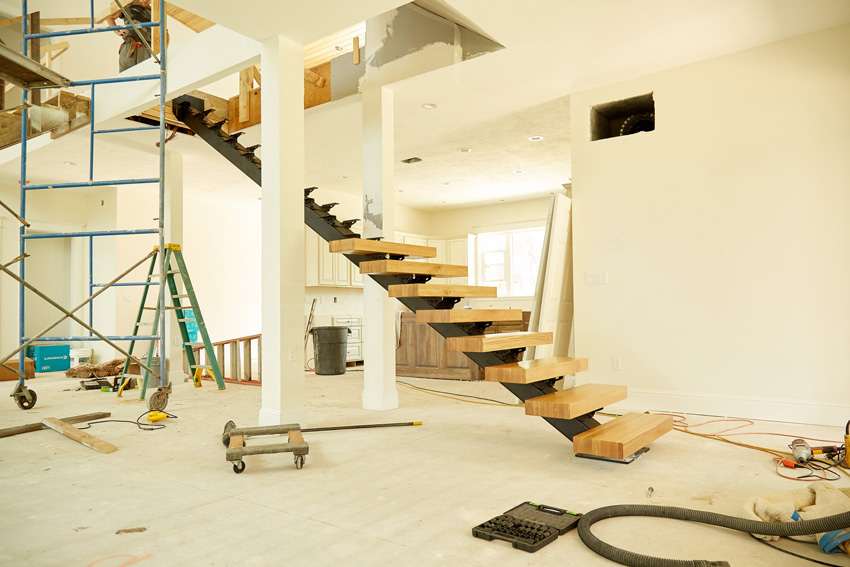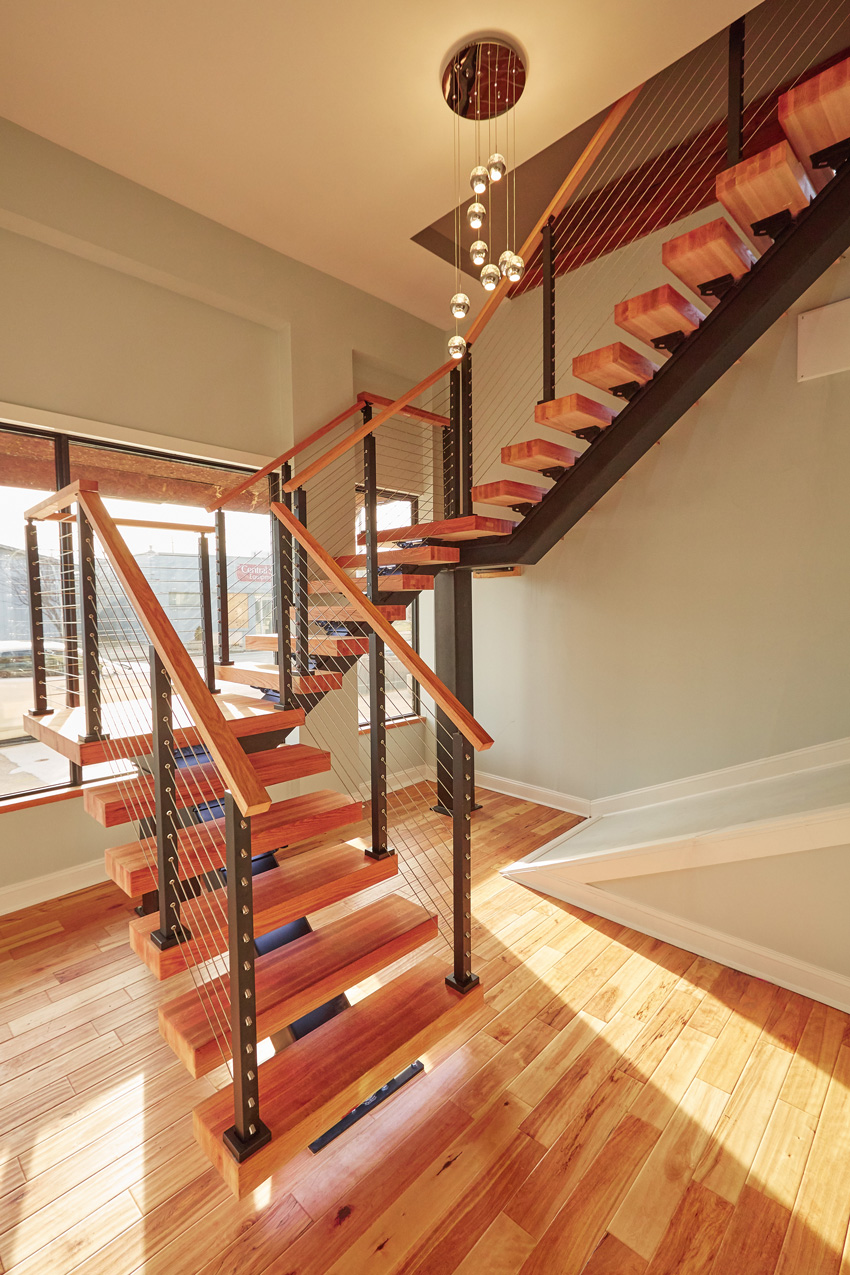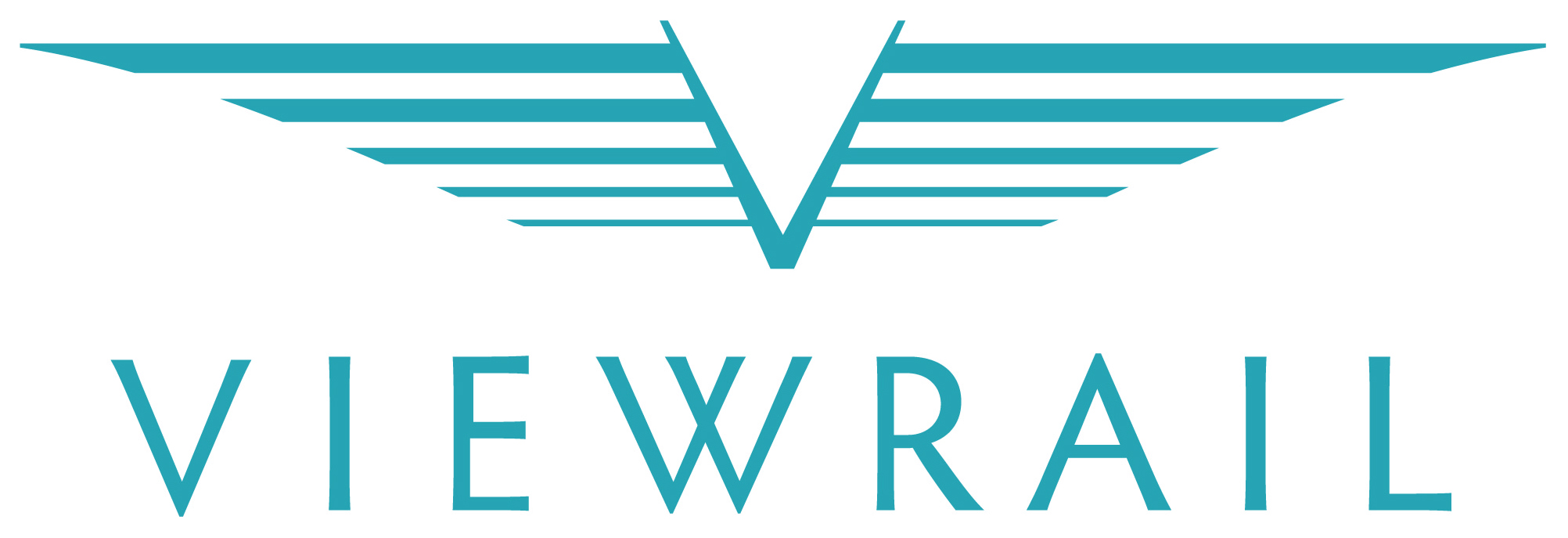The Beautiful, Modern, Budget-Friendly Floating Staircase
Straightforward Design Process
In many cases, the design process of a floating staircase begins with dimensions. Once the dimensions of the project have been provided, a designer will often work with an internal support team to identify the necessary measurements of the staircase and select the stringer, treads, and railing system that will provide the desired aesthetic.
Precise Development Process
Once the design of the floating staircase has been finalized and the quote has been accepted, the engineering process begins. Detailed shop drawings of the floating staircase will be developed that illustrate the precise dimensions of the staircase and any customization that has been requested. Once these shop drawings are approved, the production crew will begin cutting, welding, and powder coating the stringers, and carefully crafting each tread.
Quick Delivery
Some manufacturers can deliver a floating stair system in as little as six weeks from the time that production begins.
Easy Installation
“The two most common questions I get from designers, once they have seen the floating staircases, are ‘How is it installed?’ and ‘How much does it cost?’” explains Fernando Sainz, president of sales and co-owner of Viewrail. “The staircases are beautiful, but the thing that impresses designers is how quickly they can be installed. Contractors and builders are installing these floating staircases in as little as one day. It’s incredibly fast and it means that architects can add these modern architectural elements without negatively impacting the completion date of the project.”

The installation of a floating staircase can be completed in one day, and contractors have the flexibility to install the system during rough-in or the finished stage of the project.
Ease of installation is one of the key differentiators between various floating staircase providers. Some manufacturers have streamlined the process so that a floating staircase can be installed in a day. These systems arrive to the job site pre-welded, prefabricated, and ready for installation.
Here is a basic installation overview. The mono stringer has attachment plates on either end to serve as attachment points for the top and bottom of the staircase. Once the stringer is in position, the individual brackets are installed onto the stringer. Then the treads, which have been precisely routed out to accept the brackets, are placed onto the brackets and secured.
Once the treads have been installed into the staircase, it’s time to install the railing system. The posts can be mounted on top of the treads or attached to the sides of the treads. The handrail is secured onto the posts, and the cable or rod infill systems are pulled horizontally from one post to the next.
These systems also offer flexibility in terms of when the staircase can be installed. As soon as the joists go up on the building or house, these staircases can be installed and used as construction stairs. They are also engineered to be able to be the last item installed on the project. This enables the contractors and builders to fit the staircase into the project whenever it makes the most sense.
Overall Cost
Companies that manufacture floating staircases offer designers a more cost-effective solution because they have the experience, processes, and equipment to make their design, manufacturing, delivery, and installation smooth and issue free. The components are manufactured with specialized tooling in a factory designed, outfitted, and staffed with craftsmen and craftswomen specifically trained to create floating stairs. Owners and AEC teams will realize time and cost benefits of working with an organization that has already identified potential design and manufacturing issues and resolved them before the order is placed. The streamlined and simple installation process also safeguards project timelines and budgets, enabling contractors to install beautiful and dramatic staircases without exposing themselves to costly setbacks.
Available Customization
While floating staircase manufacturers have streamlined much of the design and production aspects of a typical modern staircase, nearly every characteristic of a floating staircase is customizable. Designers may choose a floating staircase solution even for projects with unique dimensions, site constraints, or client preferences.
Conclusion
A floating staircase can offer designers a modern and dramatic architectural element that does not monopolize a lot of interior square footage. Interestingly, these staircases are designed to be both seen and not seen. They are constructed from beautiful materials in eye-catching designs while delivering a modern, minimalist aesthetic that enables them to support open-space layouts and visually connect areas on either side of the staircase. The stairs also create unique vantage points from which people in the space can admire the interior.
Fortunately, the work that manufacturers have done to streamline the design, production, and installation processes enables these solutions to enhance the beauty of a space without breaking the budget. Designers may be surprised to learn that floating staircases purchased from a manufacturer can be half the cost of a similar staircase that will be built on-site. They also arrive prepared and packaged in a way that is easy to install, which saves timelines and keeps installed costs low. Consider incorporating a floating staircase into a commercial or residential interior, instead of nestling the conventional wood risers and treads behind drywall, and introduce clients and their guests to a heightened experience when climbing the stairs.
Jeanette Fitzgerald Pitts has written nearly 100 continuing education courses exploring the benefits of incorporating new building products, systems, and processes into project design and development.










